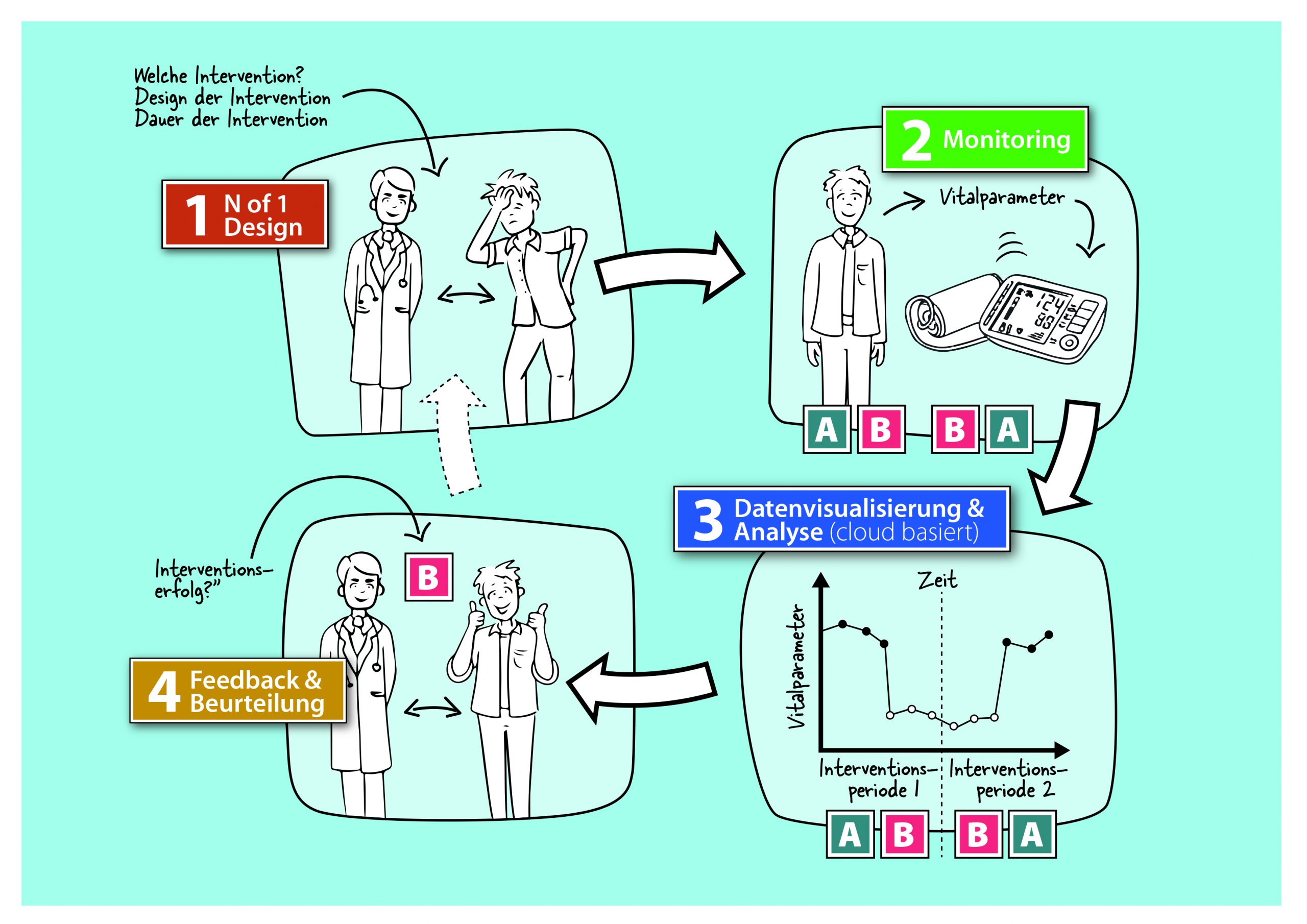The astonishing finding.
Despite more than 50 thousand self-tracking health apps, no improvement in health behaviors and literacy.
Why it matters.
Collecting data alone doesn’t make you healthier or more competent.
The solution.
Self-tracking needs an upgrade to individualized lifestyle medicine: N-of-1.
Germans spend around 1.5 billion euros on the approximately 5 million self-tracking apps and wearables sold annually.
At the same time, their health literacy remains significantly below average in an EU comparison [1]: Almost 60% of Germans lack the necessary health literacy to actually avoid preventable chronic diseases such as cardiovascular disease, diabetes, dementia with their lifestyle [2].
The COVID pandemic even worsened this situation: health literacy went down, the prevalence of obesity, physical inactivity and malnutrition went up, and sales of apps and wearables went up a notch [3].
Collecting data alone does not make people healthier or more competent, and the most beautiful graphs about the course of blood pressure or heart rate eventually become boring. That’s why at least one in two users abandons self-tracking after a few months [4].
This is a pity, because one is only rewarded with better health if (a) one permanently implements the good intention to change one or the other aspect of one’s health behavior, and if (b) what one implements also fits one’s own genetic makeup.
But who wants to wait for 2-3 decades, to see whether the self-selected nutrition and exercise habits also actually brought a healthier age. Or whether one would have been better off with the advice of other health gurus.
It is much more motivating to know not only after 3 decades, but after three months at the latest, whether what one changes in one’s exercise, nutrition, or sleep behavior actually keeps the promise of lifelong health and function.
The answers to this question can be found in self-tracking data. But only if one (a) tracks the relevant vital parameters, (b) organizes the intervention in a methodically clean (self-)experiment, and (c) then evaluates the data with appropriate statistical methods.
Until now, one had to study science to master these skills.
With LiLo, we operationalize the entire science toolbox into a layman-suitable instrument to gear one’s lifestyle with into one’s hereditary disposition, microbiome, environment, abilities and inclinations. All In the trial-and-error procedure of the N-of-1 methodology.
The real-time feedback on biomarkers of biological aging not only motivates to experiment with health behaviors and adopt the beneficial ones. It also entrains exactly that health competence that really counts: the one for one’s own organism.
References
[1] Sørensen K, Pelikan JM, Röthlin F, Ganahl K, Slonska Z, Doyle G, et al. Health literacy in Europe: Comparative results of the European health literacy survey (HLS-EU). Eur J Public Health 2015;25:1053–8. doi:10.1093/eurpub/ckv043.
[2] Schaeffer D, Berens EM, Vogt D. Health literacy in the German population – Results of a representative survey. Dtsch Arztebl Int 2017;114:53–60. doi:10.3238/arztebl.2017.0053.
[3] Schaeffer D, Berens E-M, Gille S, Griese L, Klinger J, de Sombre S, et al. Gesundheitskompetenz der Bevölkerung in Deutschland – vor und während der Corona Pandemie: Ergebnisse des HLS-GER 2. 2021.
[4] Attig C, Franke T. Abandonment of personal quantification: A review and empirical study investigating reasons for wearable activity tracking attrition. Comput Human Behav 2020;102:223–37. doi:10.1016/j.chb.2019.08.025.

